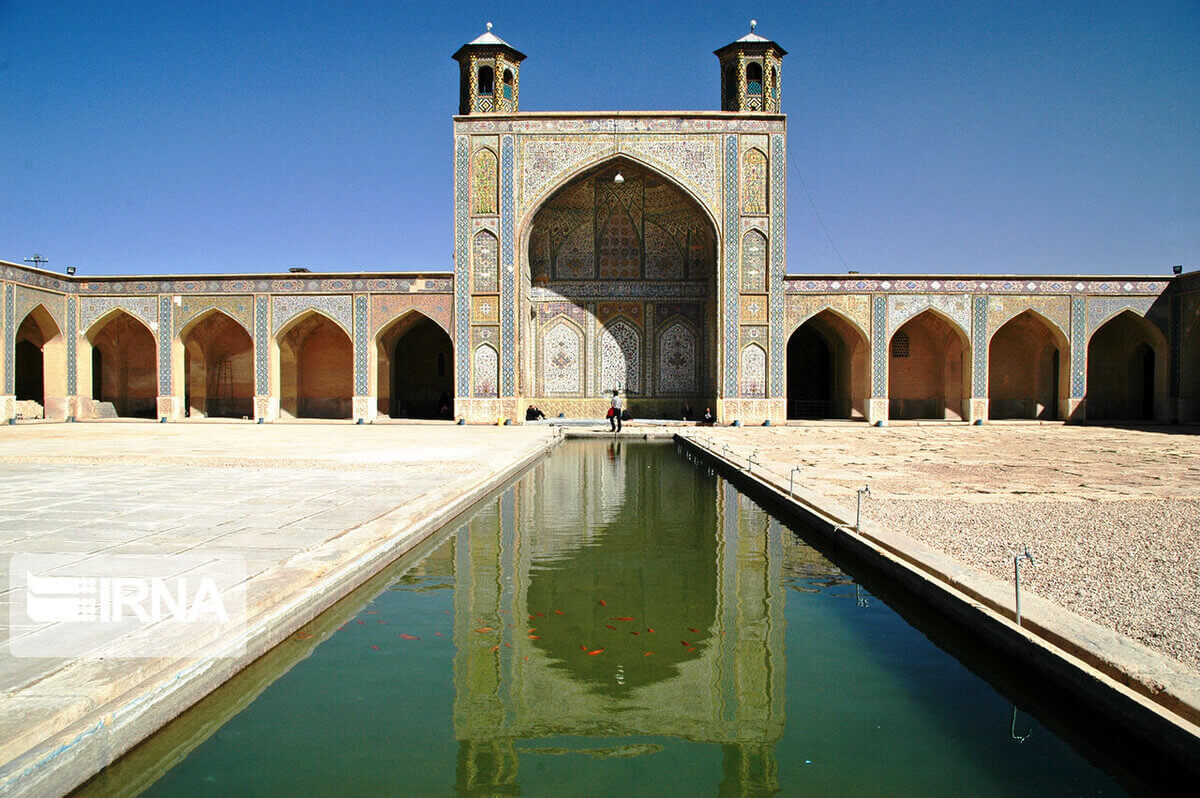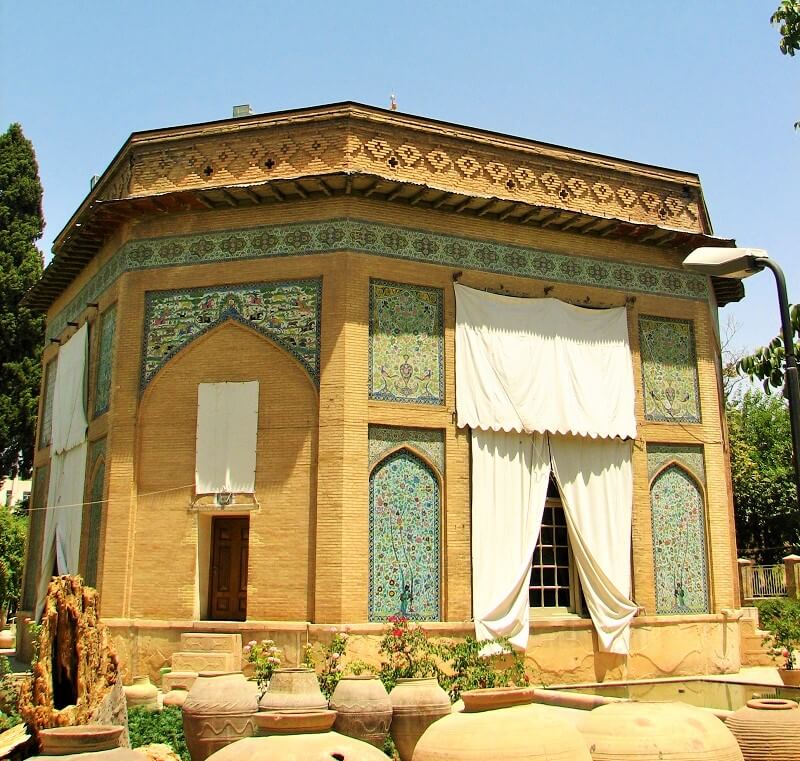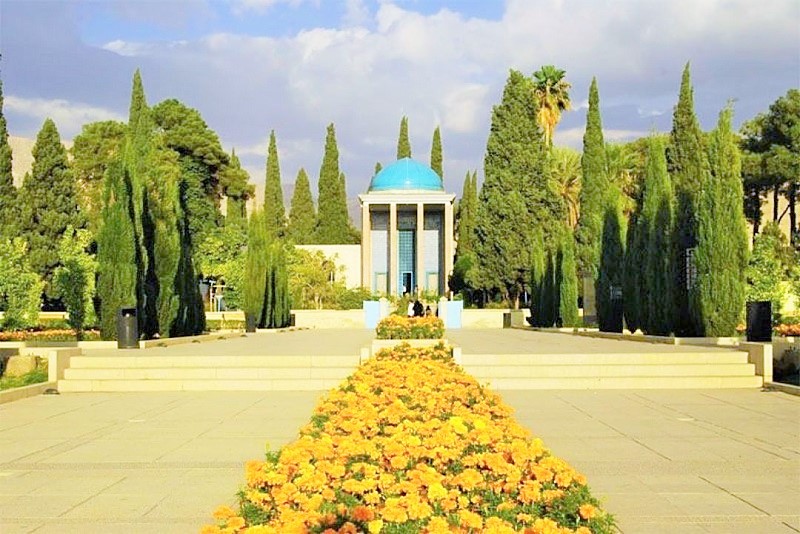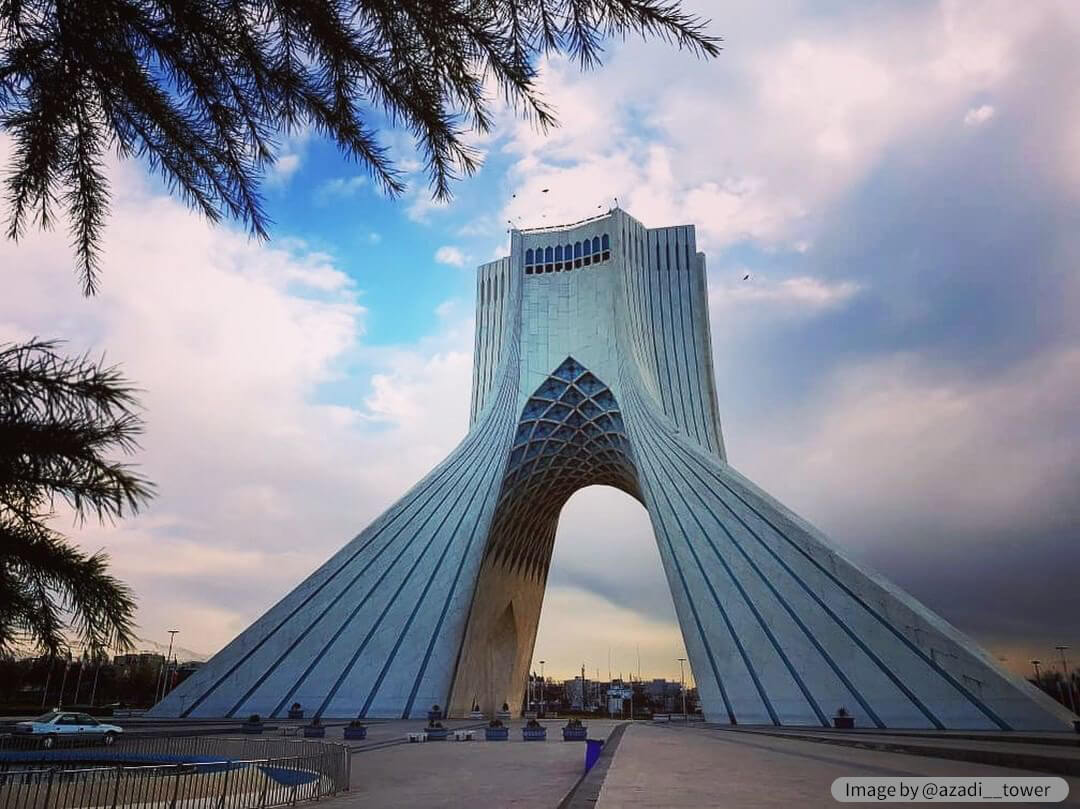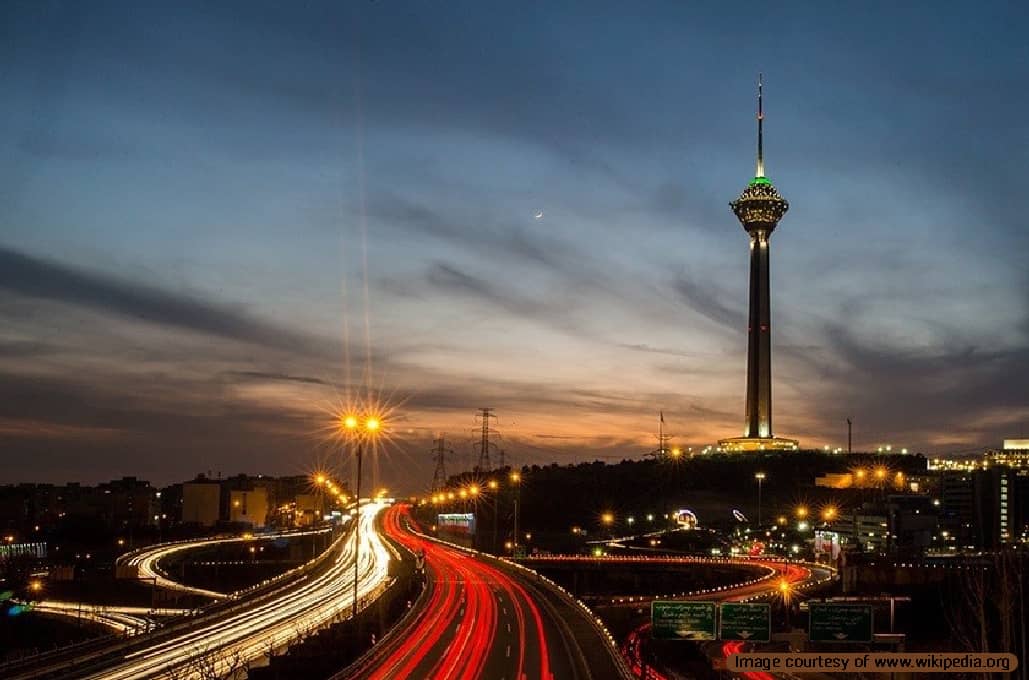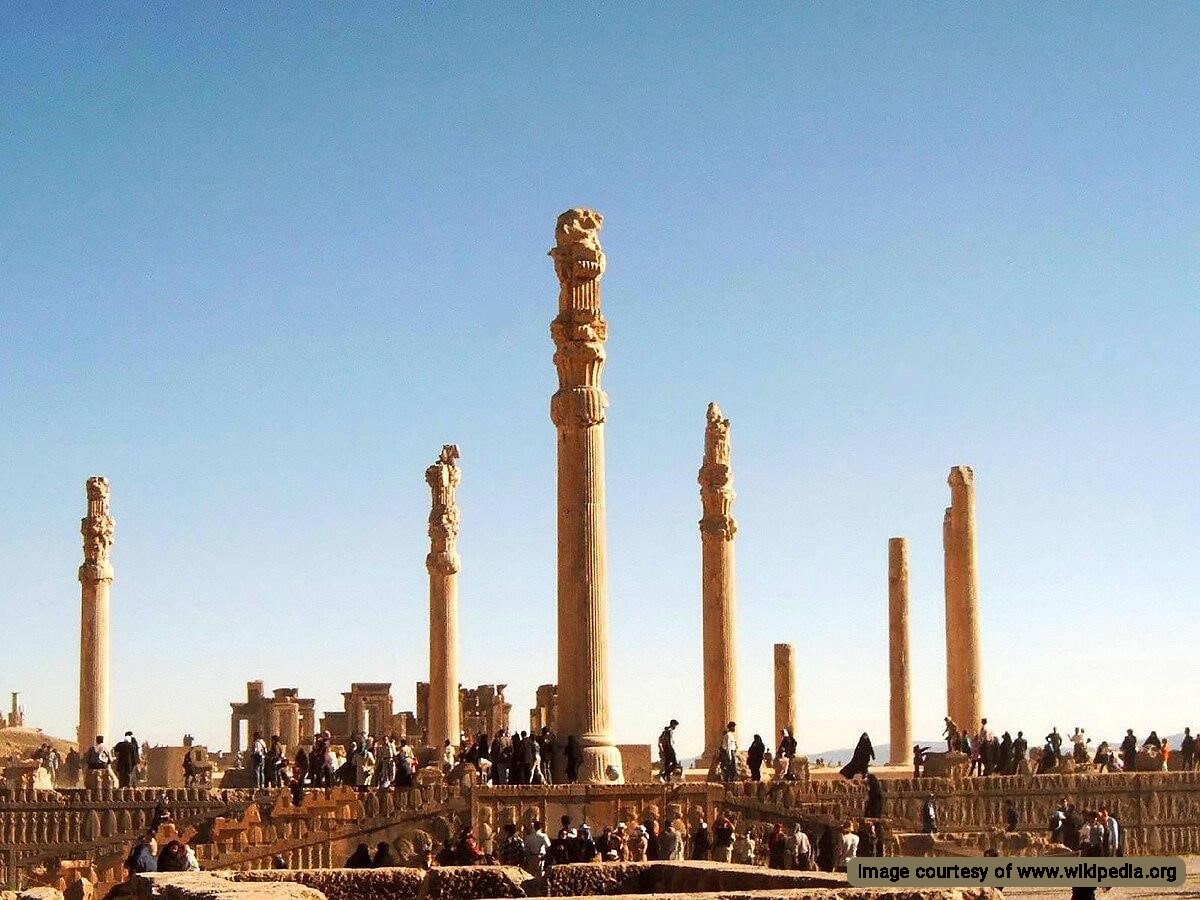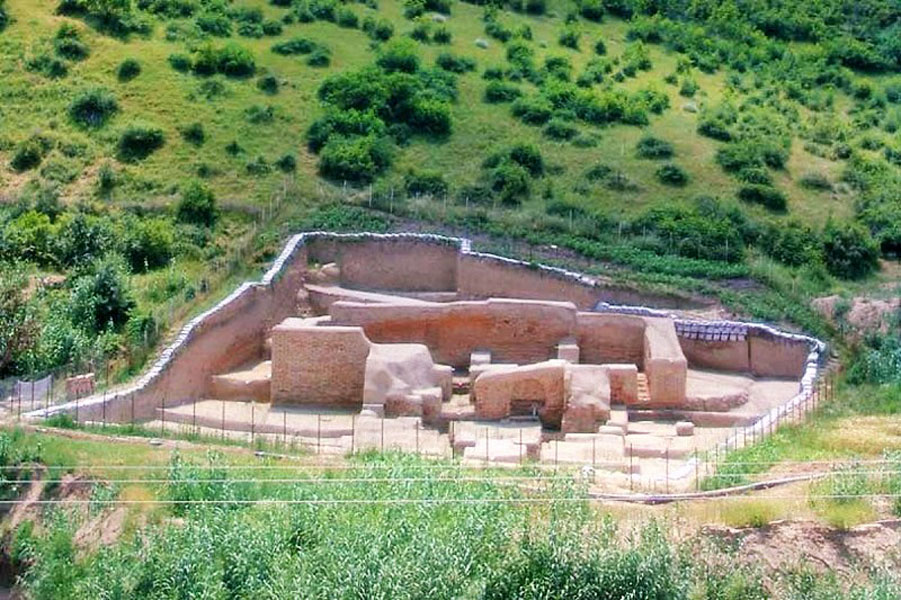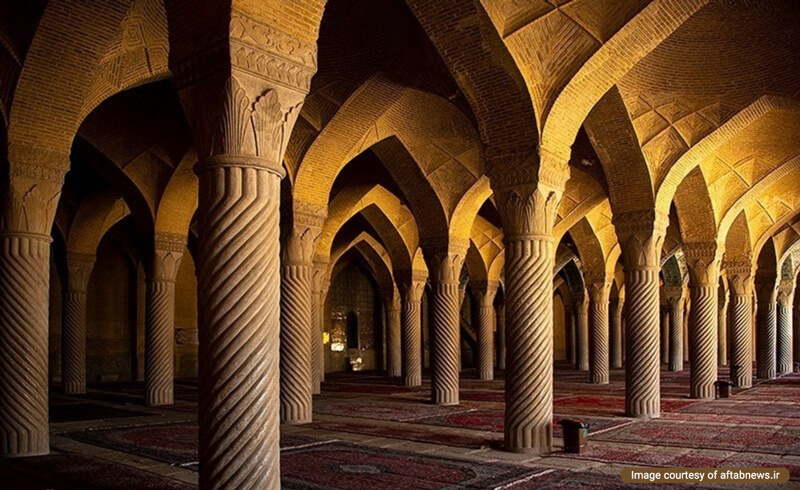
Today, when you are traveling in Iran and visiting Shiraz, Vakil Mosque is a must-see for both Iranian and non-Iranians visitors. Karim Khan, the founder of the Zand dynasty in the 18th century, built it as part of his grand development project in the heart of his capital city. The mosque is connected to Vakil Bazaar and almost attached to Vakil Bathhouse with a lane in between. Before you enter the mosque, you can see one of the corridors getting you to the middle of the main passageway of Vakil Bazaar on the left-hand side. Therefore, there has been easy access from different directions for everyone to find their way to the mosque.
Specifications of Vakil Mosque
The entire structure is extravagantly built with spacious sections in mind. There’s a vast courtyard with a relatively long pool in the middle of it. Around the courtyard, there are two eyvans (iwans) on the Northern and Southern sides in a symmetric way. On the Eastern and Western sides, there are not any eyvans hence finalizing the structure as a twi-eyvan courtyard plan.
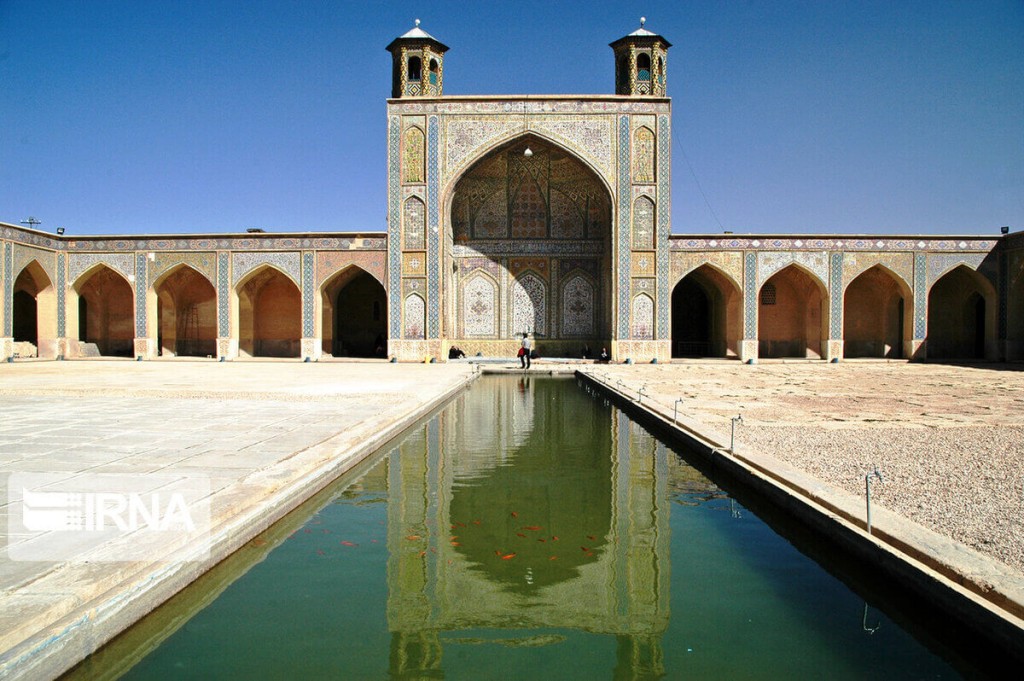
The vast courtyard is covered by stone slabs, which have recently undergone some reconstruction and new slabs have been installed. Such flooring is extended from all corners to the central pool and vice versa. As there’s no garden in the courtyard, this flat space has added to the greatness of the courtyard and allows the beauty of the tiled façade of all sides to shine and protect their livelihood.
The decoration on the Shirazi “haftrangi” (seven-color) tiles of the entrance portal and these two eyvans are eye-catching and similar. Tree-of-life patterns are clearly occupying major parts of these sections giving a peaceful wave to the square feet of the façade tiles.
At the Southern Eyvan, there’s an entrance leading to a roofed columned hall (shabestan) with 48 monolithic pillars joining one another on top through vaulted brickworks. The pillar shafts are carved in a spiral way and decorated in form of acanthus leaves at their capitals. Color of the stone pillars and those of the brick-formed ceiling match.
All ceiling decoration has been made of plain bricks except the one line coming from the southern eyvan directly toward the mihrab of the mosque. This part is an amazingly splendid corridor-like pathway set by its ceiling tile decoration embellished by Shirazi “haftrangi” (seven-color) tiles.
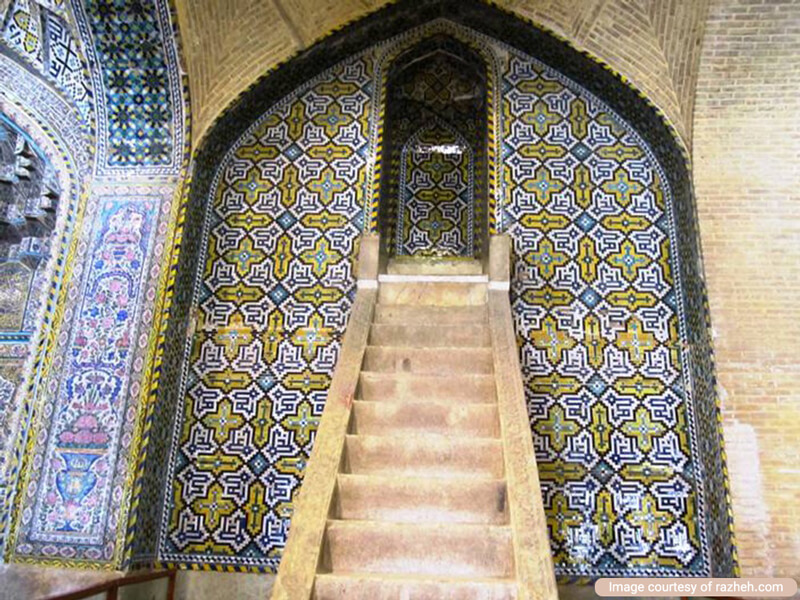
The builders of the mosque have made a minbar (preacher’s seat) out of a piece of green marble with a flight of 14 steps leading to the seat on top. This minbar is an exemplary work at Zand-period mosques.
Visit Zand Monuments during Traveling in Iran
It won’t easily happen to see several of the Zand period monuments when you are traveling in Iran unless you visit Shiraz and pay a visit to such sights. Therefore, I cannot recommend enough spending some quality time in these buildings and quenching your thirst for the taste of Zand architects and their masterpieces. Also, Shirazi artists have their own lively touch no matter which period they have been living in. That’s why I think you won’t regret spending more time in this beautiful city.






